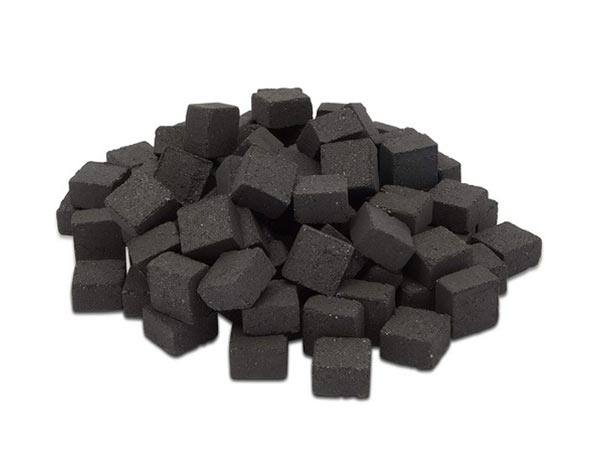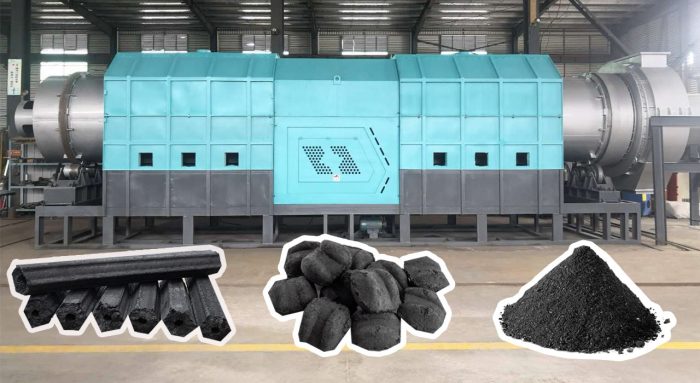The production of charcoal has long been associated with deforestation, environmental degradation, and pollution. However, advancements in technology have led to the development of machines that make charcoal production more sustainable and environmentally friendly. This blog explores how modern charcoal making machine is transforming the industry by adhering to stringent environmental protection standards, and how these innovations are contributing to a greener future.
The Environmental Impact of Traditional Charcoal Production
Traditional methods of charcoal production, such as earth-mound kilns and pit kilns, are notorious for their inefficiency and environmental harm. These methods often involve:
- Deforestation: Large amounts of wood are harvested, often unsustainably, leading to deforestation and loss of biodiversity.
- Air Pollution: Incomplete combustion of wood releases significant amounts of carbon dioxide (CO2), methane (CH4), and other harmful pollutants into the atmosphere.
- Soil Degradation: The removal of trees and vegetation for charcoal production can lead to soil erosion and degradation, reducing the land’s productivity.
Modern Charcoal-Making Machines: A Sustainable Solution
Modern charcoal-making machines, also known as charcoal kilns or biochar production units, offer a sustainable alternative to traditional methods. These machines are designed to maximize efficiency, reduce emissions, and minimize environmental impact. Key features and benefits include:
1. Efficient Biomass Utilization
Modern charcoal-making machines are designed to use a variety of biomass sources, including agricultural residues (e.g., coconut shells, rice husks), forestry waste, and even organic municipal waste. This reduces the reliance on wood from forests, helping to combat deforestation.
2. Controlled Pyrolysis Process
The biochar production equipment employs a controlled pyrolysis process, where biomass is heated in the absence of oxygen. This controlled environment ensures complete combustion, resulting in higher charcoal yields and fewer emissions. The pyrolysis process can be optimized to produce high-quality biochar, a form of charcoal used for soil amendment, carbon sequestration, and other applications.
3. Emission Control Systems
Modern charcoal-making machines are equipped with advanced emission control systems that capture and treat harmful gases before they are released into the atmosphere. This includes the use of condensers, scrubbers, and filters to remove particulate matter, tar, and volatile organic compounds (VOCs). Some machines also incorporate carbon capture technology to further reduce greenhouse gas emissions.
4. Energy Efficiency
Many contemporary charcoal kilns are designed to be energy-efficient, utilizing the heat generated during the pyrolysis process to power other stages of production. This can include pre-drying the biomass feedstock or generating electricity. Some machines are even capable of operating on renewable energy sources, such as solar or biomass-derived biofuels, further reducing their carbon footprint.
Meeting Environmental Protection Standards
To ensure that modern charcoal-making processes align with environmental protection standards, manufacturers and operators must adhere to a range of guidelines and regulations. These standards are designed to minimize environmental impact and promote sustainable practices.
1. Sustainable Biomass Sourcing
Sustainable biomass sourcing is a critical aspect of environmentally responsible charcoal production. This involves:
- Certification: Using certified sustainable biomass, such as wood from managed forests or agricultural residues that do not compete with food production.
- Traceability: Implementing traceability systems to ensure that biomass is sourced from legal and sustainable origins.
- Reforestation: Engaging in reforestation and afforestation programs to offset biomass harvesting and contribute to carbon sequestration.
2. Emission Limits
Modern biochar machine for sale must comply with strict emission limits set by environmental protection agencies. These limits typically cover:
- Greenhouse Gases: Regulating the release of CO2, CH4, and nitrous oxide (N2O) to mitigate climate change.
- Particulate Matter: Controlling emissions of fine particulate matter (PM2.5 and PM10) to protect air quality and public health.
- Hazardous Air Pollutants: Reducing the release of harmful substances, such as benzene, formaldehyde, and polycyclic aromatic hydrocarbons (PAHs).
3. Waste Management
Proper waste management is essential for minimizing the environmental impact of charcoal production. This includes:
- Wastewater Treatment: Treating any wastewater generated during the production process to remove contaminants before discharge.
- Solid Waste Recycling: Recycling by-products, such as ash and biochar, for use in agriculture, construction, or other applications.
- Hazardous Waste Disposal: Safely handling and disposing of any hazardous materials in accordance with regulatory requirements.

The Social and Economic Benefits
In addition to environmental benefits, sustainable charcoal production using modern machines offers significant social and economic advantages.
1. Job Creation
The establishment of modern charcoal production facilities can create jobs in rural and urban areas. This includes positions in manufacturing, operation, maintenance, and biomass supply chains. Job creation in these sectors can stimulate local economies and improve livelihoods.
2. Improved Public Health
By reducing air pollution and environmental degradation, modern charcoal production methods contribute to better public health outcomes. Cleaner air and healthier ecosystems reduce the incidence of respiratory and other pollution-related diseases, enhancing the quality of life for local communities.
3. Sustainable Development
Sustainable charcoal production aligns with broader sustainable development goals (SDGs), such as climate action (SDG 13), responsible consumption and production (SDG 12), and life on land (SDG 15). By promoting sustainable practices, the charcoal industry can support global efforts to achieve these goals. See the mobile biochar machine here.
Conclusion
The transition from traditional to modern charcoal-making methods represents a significant step towards sustainable waste management and environmental protection. Modern charcoal-making machines, with their efficient biomass utilization, controlled pyrolysis processes, and advanced emission control systems, offer a viable solution to the environmental challenges posed by traditional charcoal production.
By adhering to stringent environmental protection standards, sourcing sustainable biomass, and implementing effective waste management practices, the charcoal industry can reduce its ecological footprint and contribute to a more sustainable future. Furthermore, the social and economic benefits of modern charcoal production, including job creation, improved public health, and support for sustainable development goals, underscore the importance of embracing these innovative technologies.
As we continue to seek sustainable solutions to global environmental challenges, the role of modern charcoal-making machines in promoting sustainability and environmental protection cannot be overstated. By investing in these technologies and supporting their widespread adoption, we can pave the way for a cleaner, healthier, and more sustainable world.
